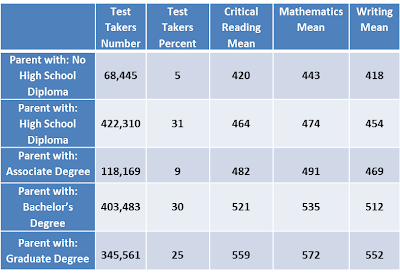America's Teacher's Today- Inhibiting or Accelerating Student Success?
Research studies at more than 6,000 fourth-grade Texas classrooms revealed the following significant differences that separated low SES school systems from high SES school systems:
Low SES School System
- Extremely lower scores on state assessment tests
- Poor classrooms = less school materials
- Curriculum is less interactive and more authoritative
Who is to Blame?
Resources, school environment, and student
socialization in the classroom are just a few things that are brought back to
teachers. The issue of lack of resources cannot be blamed simply on the
educators, but it is their responsibility to be sure everyone is receiving the
same level of education no matter their socioeconomic status. In today’s
curriculum, the material leans toward the affluent members of society who can
afford to have the time and materials necessary for school related affairs. The curriculum also goes under the assumption
that the students in the classroom have all had similar life experiences. This is simply not the case as
often low SES students do not get beyond their immediate neighborhood; local
grocery store, apartment and school.
The following graphs analyze the
percentage of student proficiency in three different academic categories over
different grade spans based on the overall population and based on student
socioeconomic status:
|
What Needs to be Done?
Educational reform needs to begin from inside the system. One
cannot change the makeup of a student body to better academic results. It must
be a responsibility of the education system to provide more accommodating
system for a group of diverse students. Ladd’s research promotes using student academic
achievement to evaluate teaching quality. Her theory states that
by “attaching stakes” to student academic achievement, it will promote teachers
to work harder in helping students by putting their job on the line if their
students fail.
Source: "Grade Span Configuration – A Local Investigation." Ames Coalition for Effective Schools. ACSD School Board, 10 2010. Web. Web. 15 Nov. 2012. <http://amesces.wordpress.com/2010/09/10/grade-span-configuration-a-local-investigation/>.


